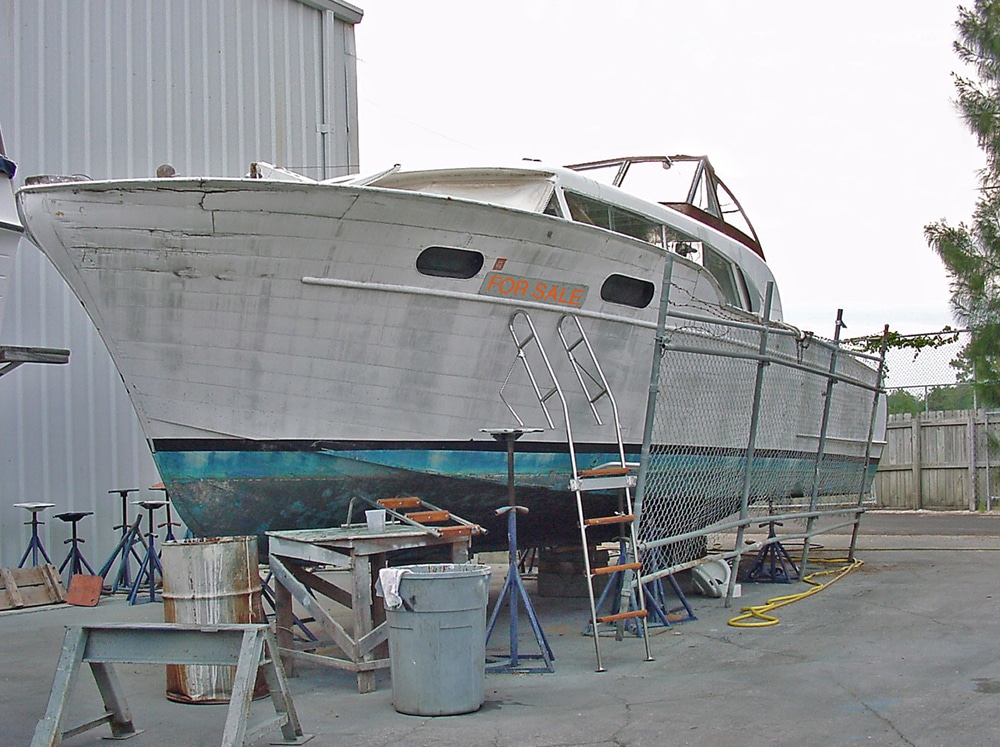
Yacht Marketing 101
A pal of mine who runs a large yacht brokerage took me to task recently. “Coyle, I appreciate your efforts instructing Yachting readers on how to tell the difference between a pre-owned creampuff and a horse ready for the glue factory (“Power Play,” January 2010) but that’s only half the story. Most buyers today are savvy; the problem is that too many sellers are emotionally and economically divested from their boats—they don’t want to spend a penny on pre-sale prep, and that’s costing them big bucks.”
My friend offered an example as typical—an experienced yachtsman who had moved up to a larger boat prior to selling his 60-foot convertible. “The problem was that he took his captain and his maintenance budget with him and refused to spend a dime on keeping his old ride shipshape.” Finally, after nine months and several price reductions, a potential buyer saw past the chalky gelcoat and musty interior and made an offer. The prepurchase survey generated a $20,000 punch list and the seller was forced to deal on the buyer’s terms. “If the seller had detailed the boat and taken care of the survey items ahead of time, the boat would have sold in less time for more money.”
This guy was lucky. Many buyers won’t even bother to spend the money for a survey if they think the boat is a sled. Smart sellers invest in a presale survey by a respected surveyor and act on his/her recommendations before listing the boat. While it does not take the place of a buyer’s prepurchase survey, it does give the seller the advantage of not being blindsided and survey issues do not become part of the negotiations. “A boat that is presented in good condition with a recent survey also suggests a caring, motivated seller, and buyers are more likely to dig deeper in their pockets to close a deal,” explained my friend.
Even small items on a prepurchase survey can cause big problems. “I’ve seen buyers negotiate an incredible deal on a great boat and then grouse over something silly and insist on a price adjustment.” Consider the compound deal on two boats over 80 feet—one owner moving up and the other moving down. The boats were less than five years old and maintained in Bristol condition by a full-time, professional crew. Both boats surveyed well, but one needed a new converter. Normally, this would be a minor issue but both the buyer and the seller dug in their heels. “A $2,000 battery charger almost killed a $6 million deal—it’s crazy.”
In addition to up-to-date service and mechanical and cosmetic detailing, a good broker will suggest that sellers “depersonalize” their boats. While removing clutter can be difficult for sellers who are emotionally attached to their boats, a drawer full of has-been paperwork or unidentified spare parts can cause confusion or worse. “Be careful what you leave behind,” warns my friend. Consider the boat that passed survey with a minor punch list of items. The deal was on track until the buyer and the surveyor discovered a four-year-old survey stuffed in a drawer. It listed the same items that were on the current punch list. The buyer realized that the seller had never bothered to follow the recommendations on the old survey and withdrew the offer.
My broker pal estimates that more than 50 percent of the deals that come across his desk are boats that have sold below current market value because they were not properly prepared for sale. “Sellers have the advantage when they set their passion aside and think of their boat as nothing more than a product to be marketed.” Even though pre-owned inventories in most markets have been whittled down, today’s buyers remain reluctant to “go ugly early.” If you are able to sell a good boat that looks bad, it will likely take more time and you may leave as much as 10 to 30 percent of its value on the table. Bottom line—if the boat you’re selling looks like a pig, it’s worth investing in lipstick!








